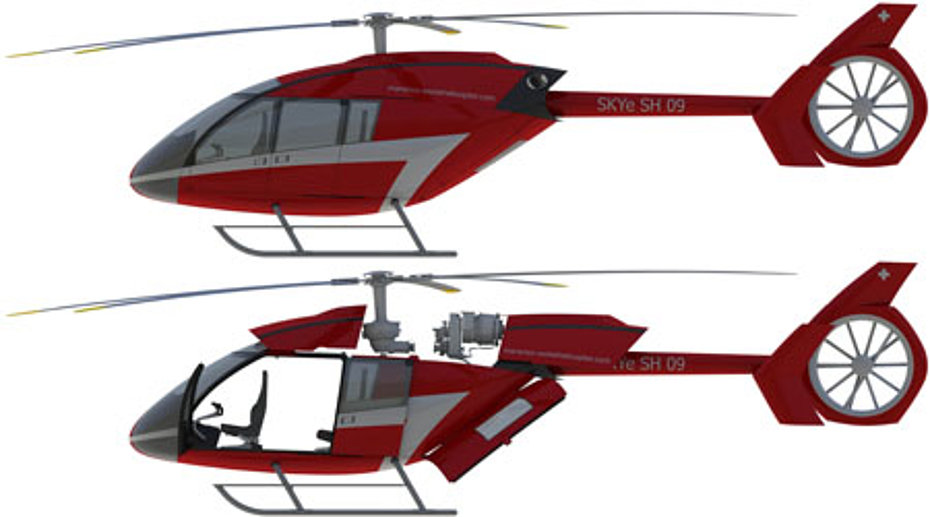
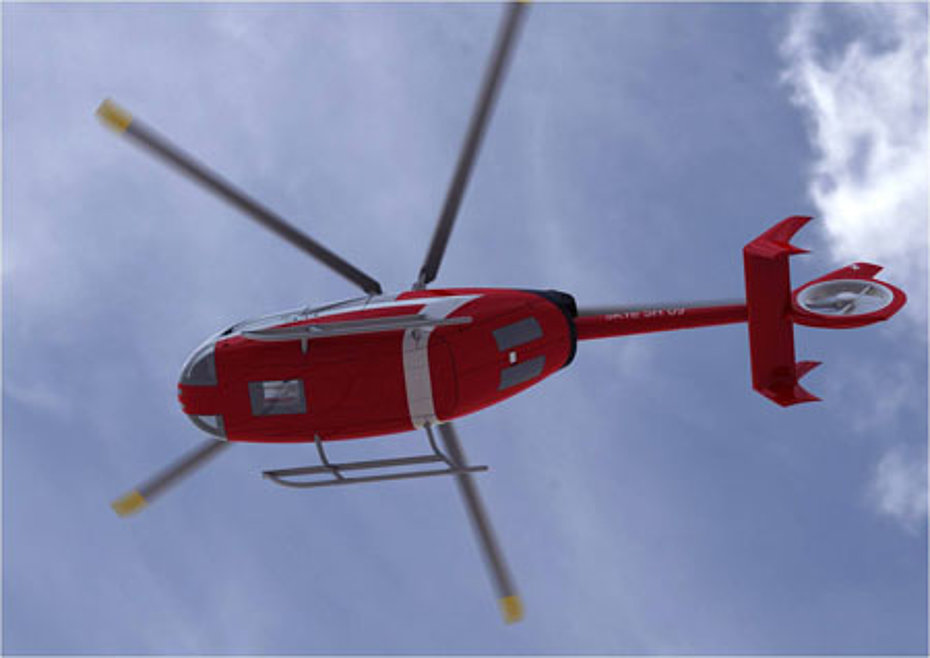
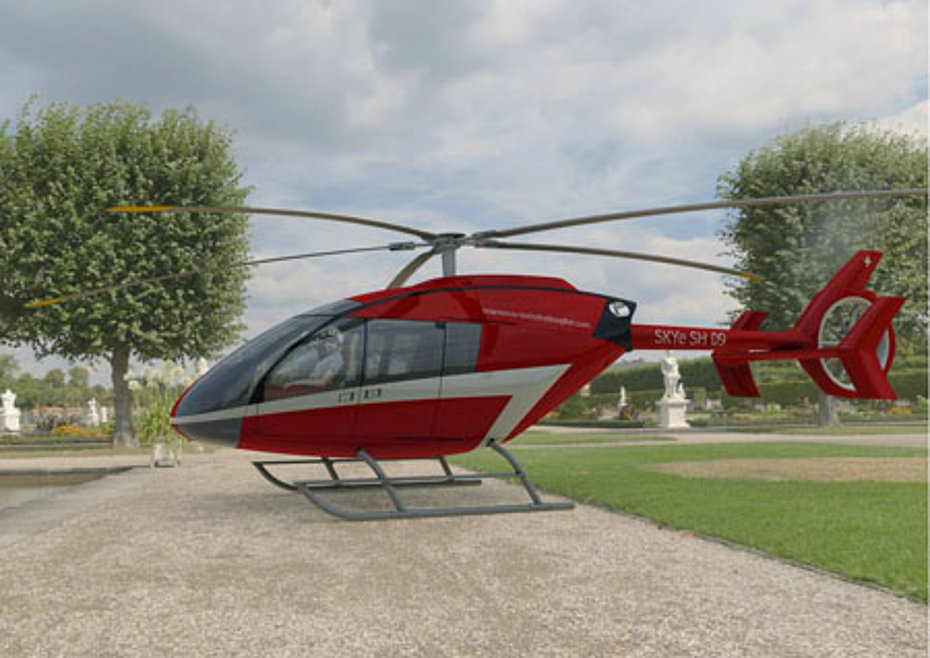
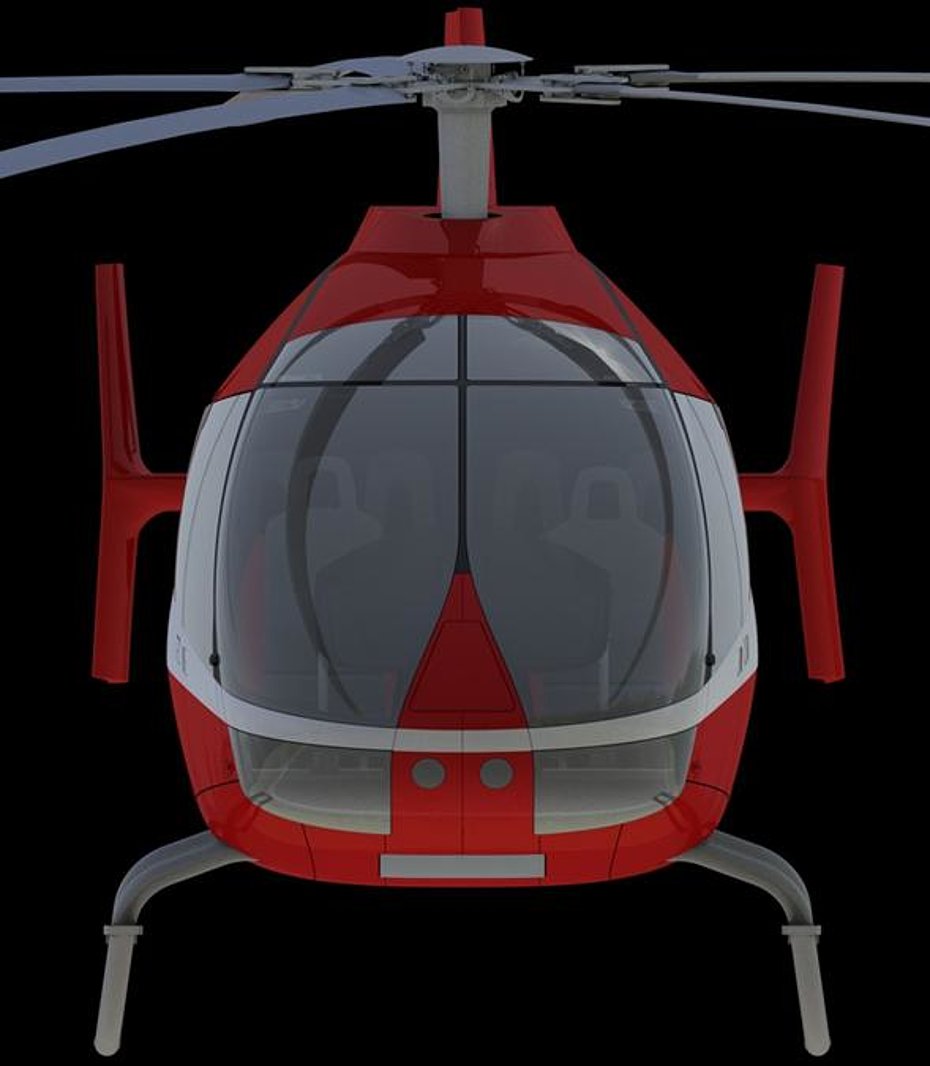
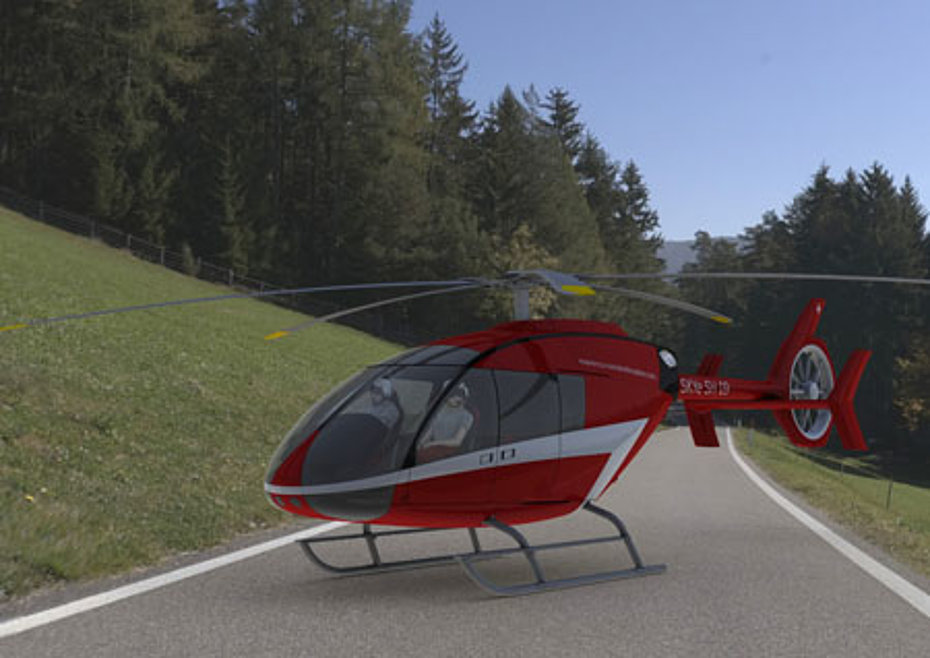
History and technical description
At the annual Heli Expo, which took place in Orlando/Florida between 5-8 March 2011, Marenco Swisshelicopter Ltd. unveiled the SKYe SH09, a real novelty on the market described by its engineers as the next generation of multi-purpose single-engine light helicopter.
The full-scale mock-up drew the attention of the visitors. It is almost sure that, if the promises made by the managers of the group are confirmed, it will almost certainly have a brilliant success.
Will it be the first helicopter "made in Switzerland" to be produced in series? Those who want an answer will have to be patient, because the way to success is still long and demanding.
In the meantime you can get acquainted with the new helicopter and the projects of the red-cross firm.
The firm
The Marenco Swisshelicopter was founded in the end of 2008, aiming the development, construction and marketing of a new generation light turbine helicopter.
The latter is the result of the combination of the engineering experience of Marenco Ltd and a team of highly qualified helicopter specialists, pilots and aviation experts.
With this industrial visionary concept, the firm developed the SKYe SH09, a 3 million dollar new generation helicopter built with a design that concentrates on the key notion of competitive superiority, modularity, advanced ergonomics and choice of materials.
Theoretically, this top performer should have better performances than the well known competitors, such as the AS350B3+ Ecureuil, Bell 407, MD 600 or the Italian AW 119 Koala.
Another reason of great interest, at least for the Swiss Heli fans like me, is the fact that the firm is based in Niederurnen, Canton Glarus.
Technical description
The SKYe SH09 is a helicopter of standard configuration, positioned in the 2.5 ton class with an advanced bearing-free rotor system with 5 blades in full composite and a shrouded tail rotor resulting in reduced noise emission levels, low maintenance layout, increased safety for people on the ground. The smaller size allows it to be higher than people or objects on the ground, and the enclosure provides peripheral protection.
The lightweight cell has excellent aerodynamics and is made of composite materials with high crash resistance, a technology used in the Formula 1 industry. The high ceiling optimizes the cabin configuration, with regards to available space, ease of loading, in flight visibility and unrivalled comfort.
The modularity of the cabin, with its flat floor and the unique high ceiling, offers multiple seating arrangements with 5 (2+3) to 8 (3+3+2) individual crashworthy seats.
Rear access loading through the clamshell doors is facilitated because the tail boom is placed significantly (about 180 cm) above the ground. This clearance allows ground crew to stand underneath and load for example with ease the stretcher and all of the medical equipment.
The helicopter is fitted with four doors: the two in front, largely glazed, can be discarded in flight in case of emergency. The two rear sliding doors are only glazed in the upper part. The front of the cabin is almost completely enclosed with Plexiglas and the visibility is excellent in all directions. The design also incorporates a large floor window between the front seats, which allows the pilot to hook loads without trying to crane through a side bubble window. This solution will certainly be appreciated by the pilots who will use this helicopter to transport suspended loads.
The tail boom is fitted with twin vertical fin and a horizontal stabilizer. The helicopter has a tubular skid landing gear.
The SKYe SH09 is powered by a Honeywell HTS900 (ratings: 820 shp at takeoff, 756 shp max continuous), a modern turbine with excellent fuel consumption, no hard TBO (Time Between Overhaul) and a modern FADEC (Full Authority Digital Engine Control) with an advanced dual channel and a manual backup provision. The Honeywell HTS900 engine incorporates a dual centrifugal compressor, bringing increased power output, reducing engine fuel consumption and providing for engine growth with the same compressor architecture.
The SKYe SH09 is conceived to be transformed to a twin engine at customer's request, but for the moment that is music for the future affirms CEO Martin Stucki.
The standard fuel tanks have a capacity of about 800 litres.
Performances
Marenco Swisshelicopter announces that the SKYe SH09 will have exceptional performances.
For example, in the air ambulance version (at 2'200 kg take-off weight), it will be able to hoover on the top of the Matterhorn (4'478 m) in ISA +20°C conditions.
With a fast cruise speed of 270 km/h (145 knots) it will be one of the fastest in its class, and will also offer very long range in excess of 800 km (430 nautical miles) with standard fuel tanks.
Dimensions and weights
The main rotor of the SKYe SH09 has a diameter of 11 m, while the fuselage has a length of 10.20 m. The tail rotor has a diameter of 1.20 m.
The standard empty weight of the aircraft is about 1'300 kg, while its MTOW is 2'650 kg with internal load and 2'800 kg with external load.
Civil employ
The SKYe SH09 is conceived to fulfil a large number of tasks such as: passenger transportation, sightseeing, corporate and executive flights, SAR missions, aerial crane, police missions (observation, surveillance, law enforcement), fire-fighting services, flight training and instruction.
Marenco Swisshelicopter affirms that the helicopter will perform multi-role missions that currently require several different aircraft.
Conclusions
The Marenco's Swisshelicopter team intention is obviously to conquer the international market.
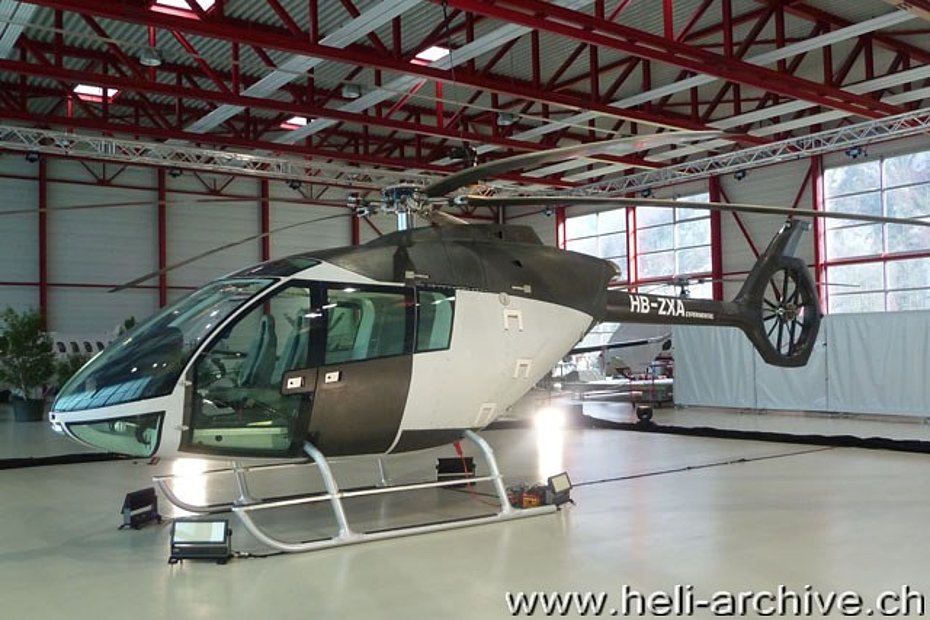
Will the SKYe SH09 be the next successful helicopter? It is quite difficult to answer this question, but of course HAB will follow the evolution of this interesting project.
The forecast is that worldwide needs (military and civil) in the next ten years is at least of 15'000 helicopters, the half of which are light single engine machines. Don't forget that today's helicopters (such a those already mentioned in this article) were developed in the '70s. The current production versions are all evolutions of original designs.
The roll out of the prototype
Meanwhile on November 28, 2013 there was the roll-out and the first prototype (HB-ZXA) of the high-tech helicopter made in Switzerland was presented to the press at Mollis/GL airport. Instead, the first flight scheduled for early January 2014 was made on October 2, 2014 by American test pilot Dave William. Certification was initially planned for the end of 2014. In 2018 the company was renamed Kopter Group and the name of the helicopter was changed to SH09. On April 8, 2020 Kopter was acquired by Italian giant Leonardo for $185 million. On April 21, 2021 the helicopter was named AW09. EASA certification is expected by the end of 2022. According to rumours, the company has accumulated around 70 orders. The first helicopter is expected to be delivered to the Swiss company Air Zermatt.
For the rest… affaire a suivre!
More information about the AW09 here: https://koptergroup.com/
HAB 10/2011

